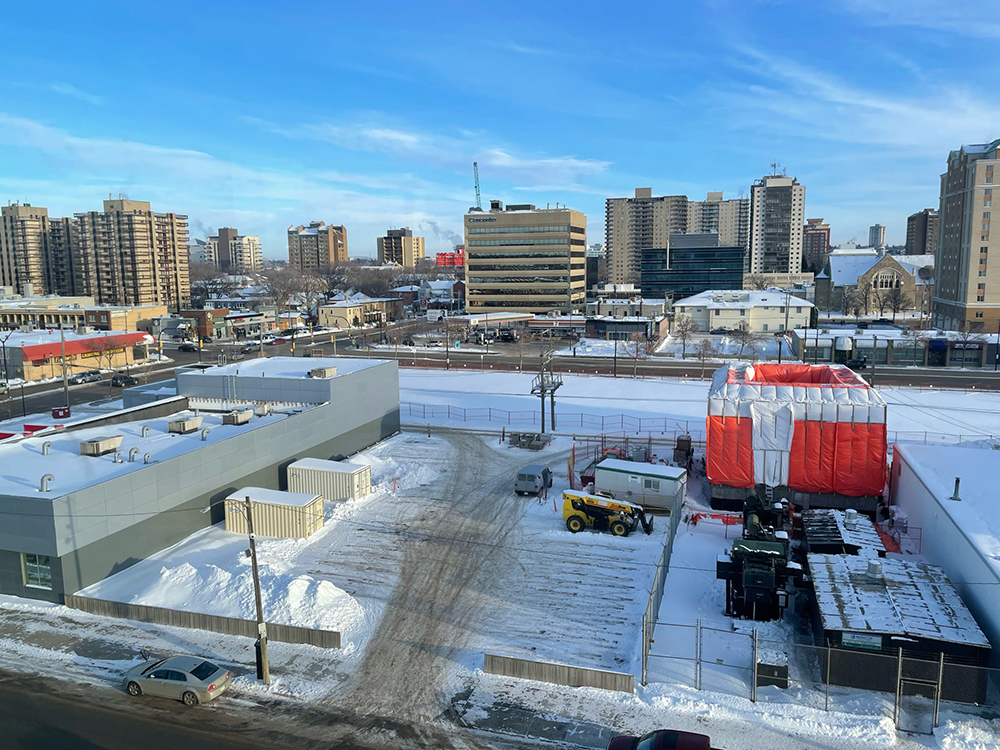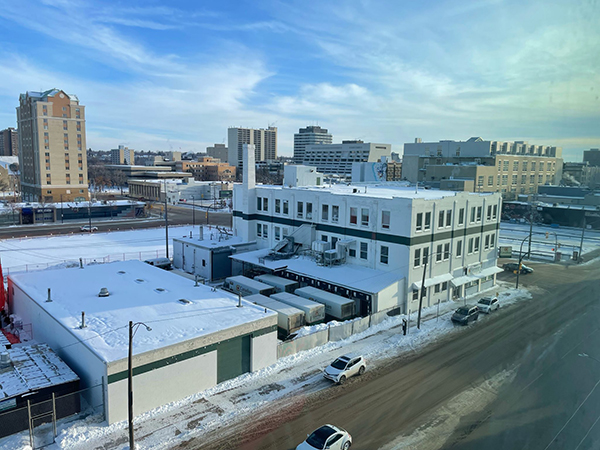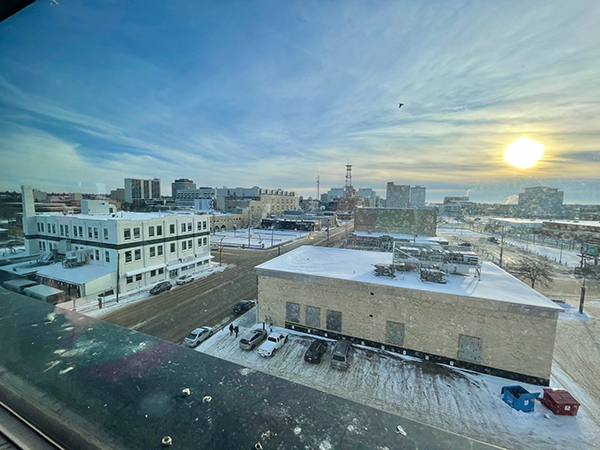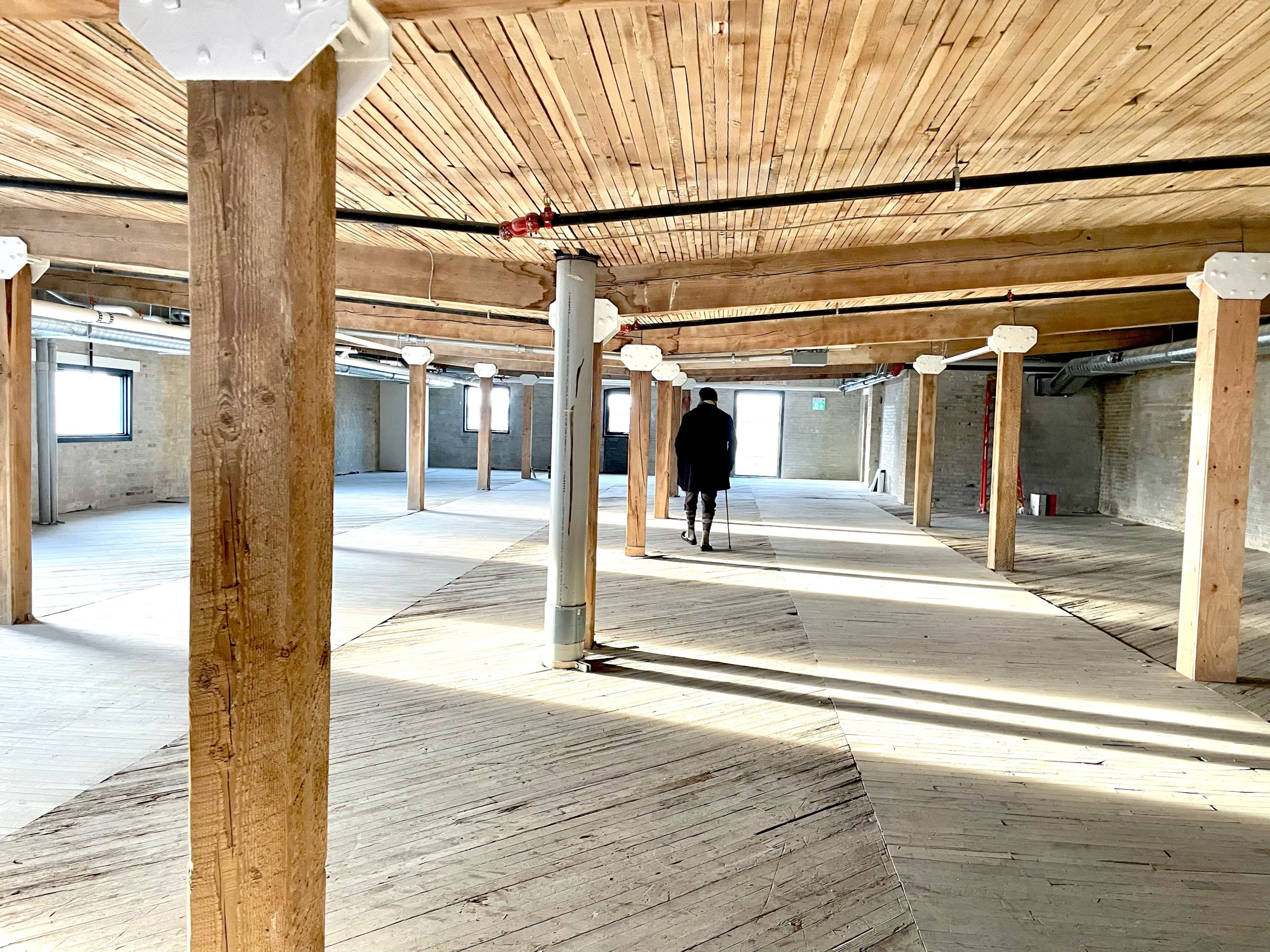Downtown Saskatoon | February 10, 2023 — Last month, the Saskatoon Heritage Society hosted a tour of the newly renovated Tees and Persse Building, with property owner and developer, Gayle MacDonald of Legacy Land Inc.
In case you missed the tour, DTNYXE’s Sarah Marchildon attended to explore the nooks and crannies of Downtown. With our first fun fact, it’s pronounced Pierce, not Purse.
Gayle, new to the industry of property development, was both surprised and happily-challenged when both 301 and 331 1st Ave N accepted her offers for purchase, after both having originally declined. With an unexpected two properties on her hands, Gayle flexed her philosophy of providing what isn’t already here — a theme seen often through the buildout and tour, and a theme Heritage Society members and DTNYXE value as these remaining heritage properties are now catalysts for Saskatoon’s Downtown Warehouse District.
The presentation began at Gayle’s other owned property, Legacy Land’s 301 building located at 1st Ave N, an equally fascinating renovation and story. Proud tenants behind the striking 301 street sign already include Brick Loft Event Co., Coldwell Banker, The Dress Co., and Unveiled Dress Co. With only one space remaining, Gayle has personally taken on the space as Studio 301 for room rentals when you don’t want the mess at home — she hopes to see Super Bowl parties, musician jam sessions, and events serving your own Gramma’s perogies! She was thrilled to have to find more chairs for the large group who eagerly attended the Heritage Society’s event.
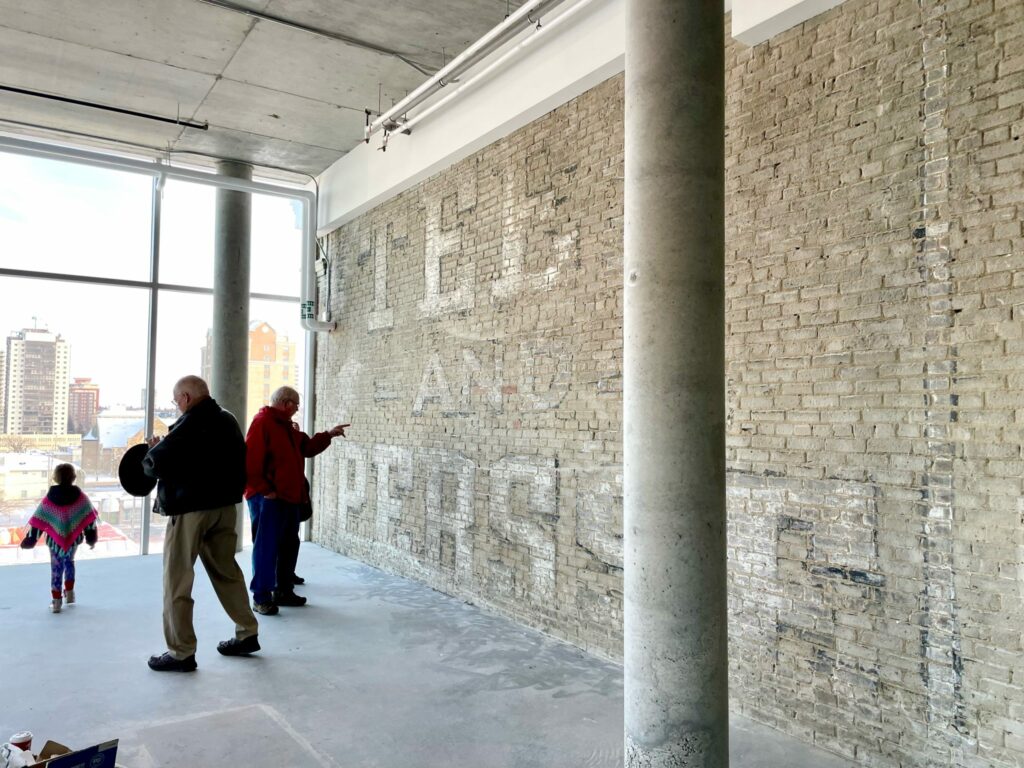
Our look at Tees and Persse was led by Saskatoon Historian, Terry Hoknes with heritage photos from the Saskatoon Public Library Local History Collection – always a grounding way to understand and value where we stand today. We learned these buildings were built before buildings were numbered with an address (301 in 1926 + 331 from 1909-13), that tenant Eddy’s Matches was ironically the cause of the building’s 1924, and that rumours of ghosts haunting the place may have been original construction workers who fell from their scaffolding. Gayle advised she hadn’t yet met the ghosts, but she’d welcome them, and ask them to turn on the lights in the morning.

We then walked from 301 to 331 through the original entry into the basement. The original footings and supports were timber, likely from northern Saskatchewan, with tree rings showing their age to be from the 1700s. Here lies Gayle’s foundation for keeping this relic standing strong for yet another 100 years… While some of these footings had rotted bases due to original drainage techniques, the drainage infrastructure has been updated and replaced with weeping tile and 4 feet of gravel, and only a few footings had to be replaced with steel ones.
We then moved through a hole in the wall, now housing a lift making the basement equally accessible, and a staircase to the addition which includes the elevator. (I once learned that the architectural openings in the Broadway Bridge cement pedestrian railing were measured to be smaller than the head of the engineer’s child, so he wouldn’t fall through! I am equally fascinated to have learned the following… ) The hole in this wall was made the size required to fit a bobcat through, so the wood basement and dirt floor could be excavated and replaced with the proper drainage materials and concrete.
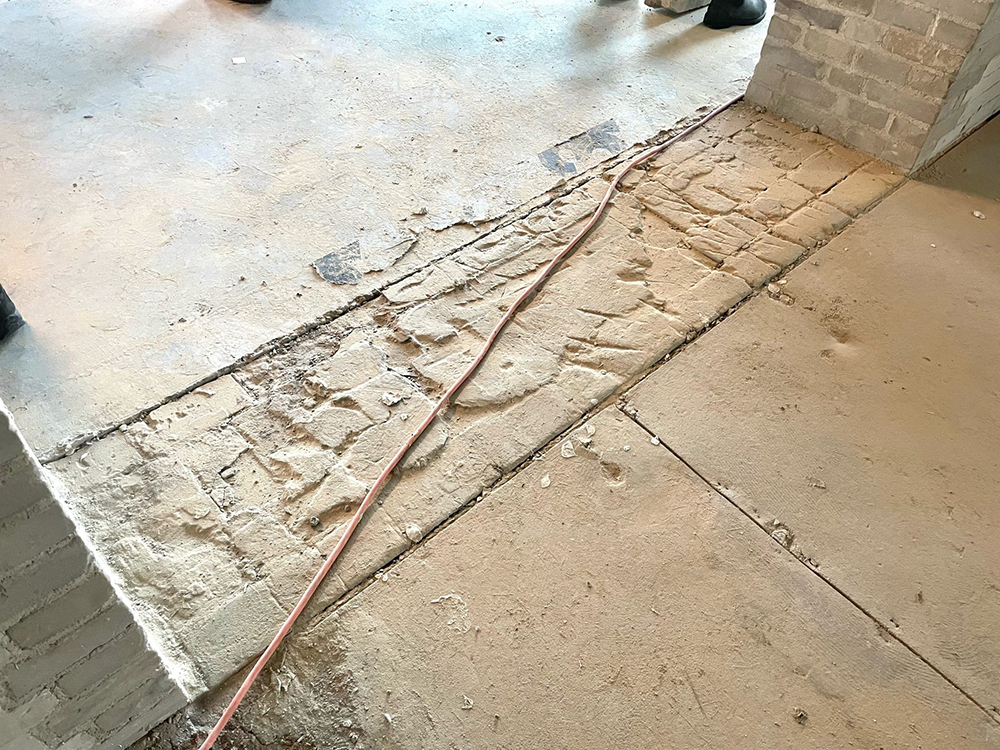


Accessibility and heritage buildings don’t always easily go hand in hand, nor are they necessarily required to always live together. Owning the adjacent 25 feet of land north of Tees and Persse, Gayle and her team of consultants determined the opportunity for a new build abutting the external north wall – this houses the new elevator to access the ground floor up to the 6th. Gayle also has interest in building out accessible living spaces, which she figures would be most appropriately built within the new space. She even dreams of an accessible skywalk to the future arena and other Downtown amenities. “Accessibility isn’t commonly in the forefront of any urban plan,” she suggested.
As we climbed through the floors, history continued to reveal itself. We saw a section of floral wallpaper, sponge painted wall and a few furniture pieces left behind from former tenant, Charter House. We learned the roof was originally and still is sloped in a V to a drainage pipe through the middle of the building. We learned if she could do it all over again, Gayle would have instead invited the former artist studio tenants from the unsafe spaces in Tees and Persse into 301 once it was renovated, then have them move back in to 331 upon completion. Peering through floor-to-ceiling windows unto astonishing views of the Downtown district, we dreamed of all that is to come in this space.
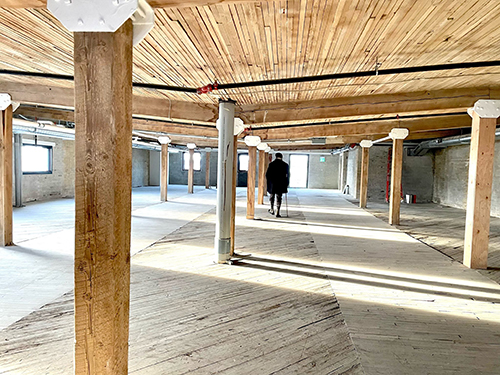
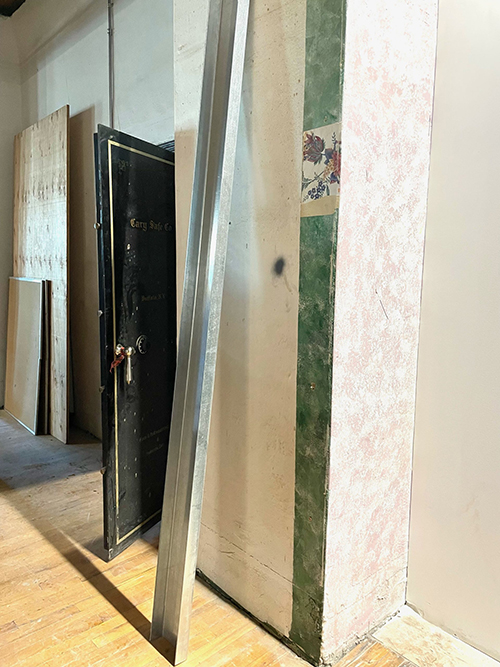
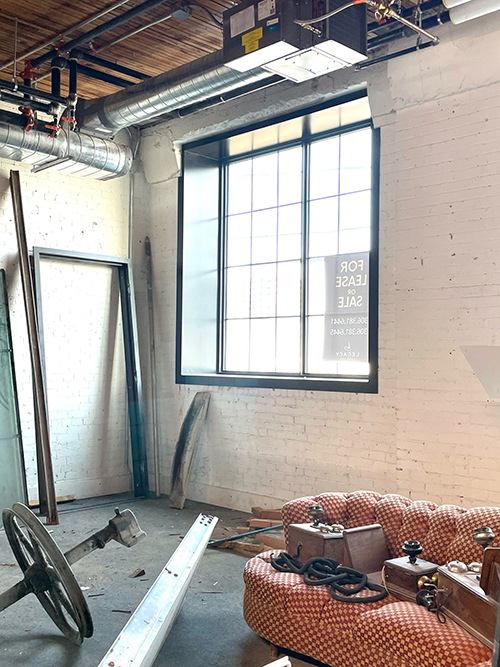
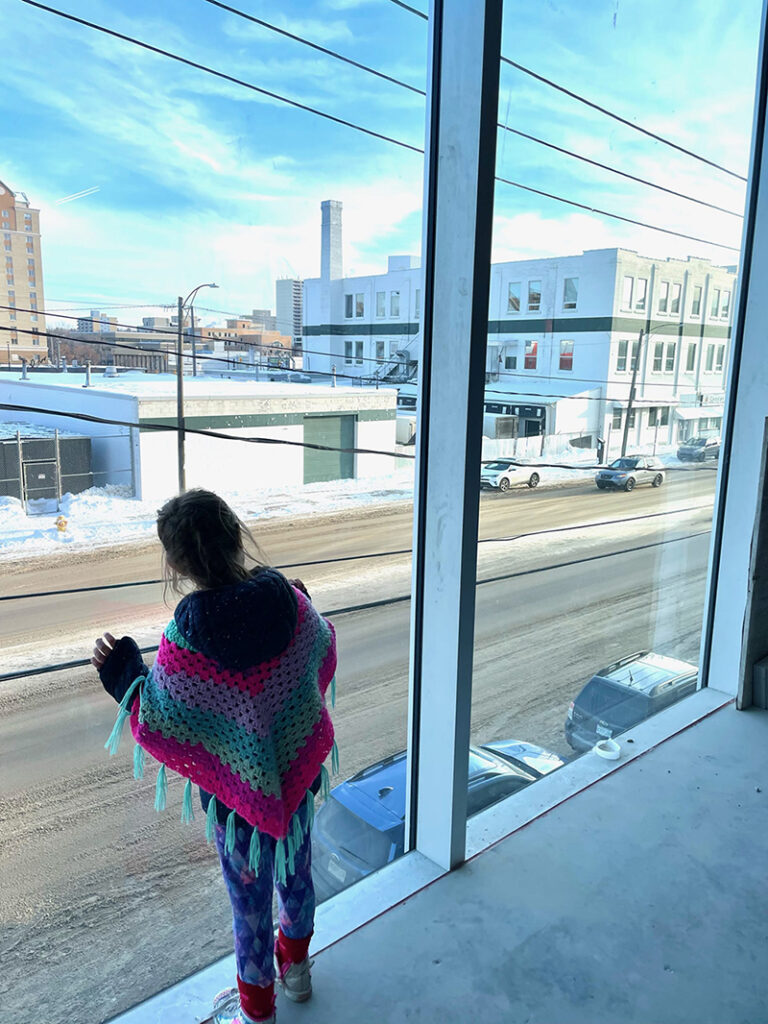
As Gayle looks forward…
- She expects the Tees and Persse Building to be at “substantial completion” any day now. She is eager for tenants, and hopeful for the welcome return of some artists. With tenancy, she will endeavour to continue further development of adjacent properties.
- When asked about the City’s future potential Downtown Event + Entertainment District, without hesitation she exclaimed “I am absolutely ecstatic! Private investment will be excited to follow and continue important buildout of this Warehouse District and entire Downtown.”
- When responding to the request to tenant a grocery store, she told the fateful story of small-town grocers who ended up only selling quick grabs of milk and bread, while the rest of customer’s groceries were bought in the big city at the big grocers – you can’t say you want it locally, then not support it! A grocer in Tees and Persse or Downtown will work when we support it fully.
- When asked how we can help, Gayle iterated the importance of grants and tax abatements for heritage property owners. “Renovating and maintaining a heritage property is never the cost-effective way to build, and I can’t pay for the entire building with just my ambition. Nor can I necessarily take every person’s wish for the building into consideration when they are not invested.” Gayle is proud to have completed her successful request for City Heritage status for the building’s heritage and architectural significance. The building’s façade is protected by designation, with a part of it uniquely preserved within the addition.
